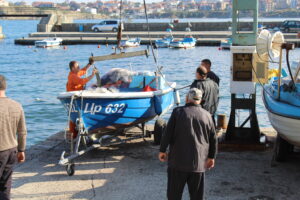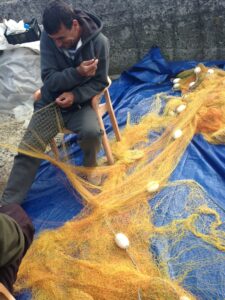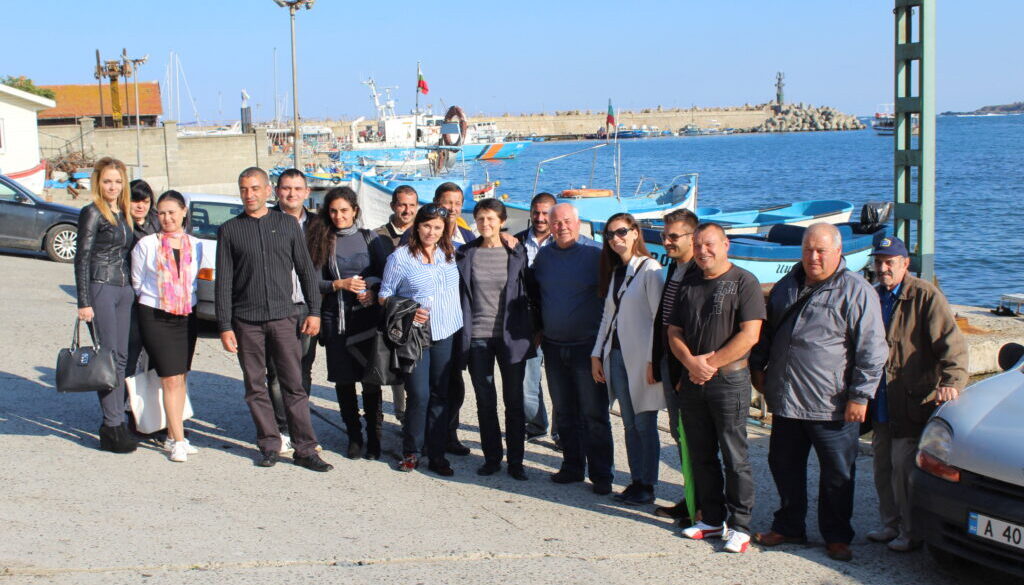- First of all, Welcome to LIFE! We are thrilled to welcome your organisation as a new member of the LIFE platform. Could you tell us a bit about yourself, your organisation, and the area you fish in?
My name is Evelina, I’m the project manager of the organisation “European Association of Fishermen in the Black Sea”, which includes fishers from Romania and Bulgaria. Since November 2017, we have been members of the Black Sea Fishermen’s Advisory Council, as an integral and essential part of the process of building future policies not only at a local, but also at the EU level. Since 2020 we are also members of National Fishers Net in Bulgaria. Our members work in the Black Sea, Dunay river (Northern border between Bulgaria and Romania) and all internal rivers and lakes.
- Since when has this organisation existed? How many fishers does your association represent and in which area do you fish?
The organisation was registered in March 2016 and we now have 103 members (commercial coastal and inland fishing) with 46 boats.

- Small scale fishers use a wide range of fish gear, adapting to the species and the seasons. Could you tell us what kind of fishing gear the fishers in your community use? How big are your boats and which are your target species?
Our fishers use different fishing gear depending on the season and type of fish they look for. These include Hooks & Lines; Traps; Gillnets and Entangling Nets. The boats used are up to 12m and the main species are Mullet, Sprat, Round Goby, Black Sea shad, Bluefish, Horse Mackerel, Red Mullet, Atlantic Bonito, Black Sea Anchovy, Turbot, Garfish, Black Sea Barbed Shark, Gurnard, Lemon Sole and Plaice.
- The Black Sea region is quite a new area for LIFE. Could you tell us more about the region and how the war between Russia and Ukraine might be affecting the SSF’s work?
The Black Sea is located in an area with geographical coordinates 40°55.5′N and 46°32.5′N and 27°27′E and 41°42′E. In its northern part, through the Kerch Strait, it is connected to the Sea of Azov, and to the south, through the Bosphorus and Dardanelles Straits, to the Sea of Marmara and the Aegean Sea. Its total area is about 423 thousand km2, and together with the area of the Sea of Azov it reaches 460 thousand km2.
Regarding the war, sea mines are our biggest direct threat in the Black Sea due to Russia’s war against Ukraine. At the beginning of the war in 2022, the explosive devices that surfaced in the water area and on the coasts of Romania, Bulgaria and Turkey were not activated, but in recent months incidents have become more frequent, in which civilian vessels have been damaged. Attacks on tankers in the Black Sea have also been accompanied by oil spills with significant environmental damage for all coastal states affecting our fisheries.
- The main mission of LIFE is to provide a voice for the sector at the European and institutional levels, but also to support fishers with overcoming their challenges on the ground. Could you tell us more about the main concerns of the fishers in your region? What are the current battles your community is engaged in?
Our battles are probably similar to many other fishing organisations in other regions. Generational renewal and maintaining an economically sustainable fleet is our main concern. Some areas of work that we have been involved in through our organisation include providing information regarding funding available for fishers and key updates in legislation concerning them. We also work with the local authorities and schools to promote small-scale fisheries and the economic opportunities they provide for the development of small settlements. We have also organised thematic events to promote fisheries and involved stakeholders from other industries such as ecological tourism.
Our main current focus is to attract more active young people and organisations as members of the association. We need to promote our activity at all administrative levels. We are also trying to work closely with the tourism industry to promote local catches in restaurants and communicate the value of our local SSF fishing fleet. We would also like to attract more women in our initiatives and finally increase the confidence of small-scale fishermen in government institutions.

- Finally, could you tell us more about your motivations to become a member of LIFE? And what do you expect from being a member of LIFE?
We would like to work together with similar organisations and learn from their experience. It was very useful for our members to visit the East Hastings Sea Angling Association in Hastings and Eastborn in the UK a few years ago for example, and learn from their experience. We were particularly impressed by the social measures that are in place to help elderly fishermen and their families and their selling scheme of their catches.
We’d like LIFE to help us with useful tips on how to better regulate the quotas and minimum sizes of catches and also support fishermen in giving value to their catches. We’d also look forward to having the opportunity to develop projects and partnerships with other mediterranean and Black Sea countries.



